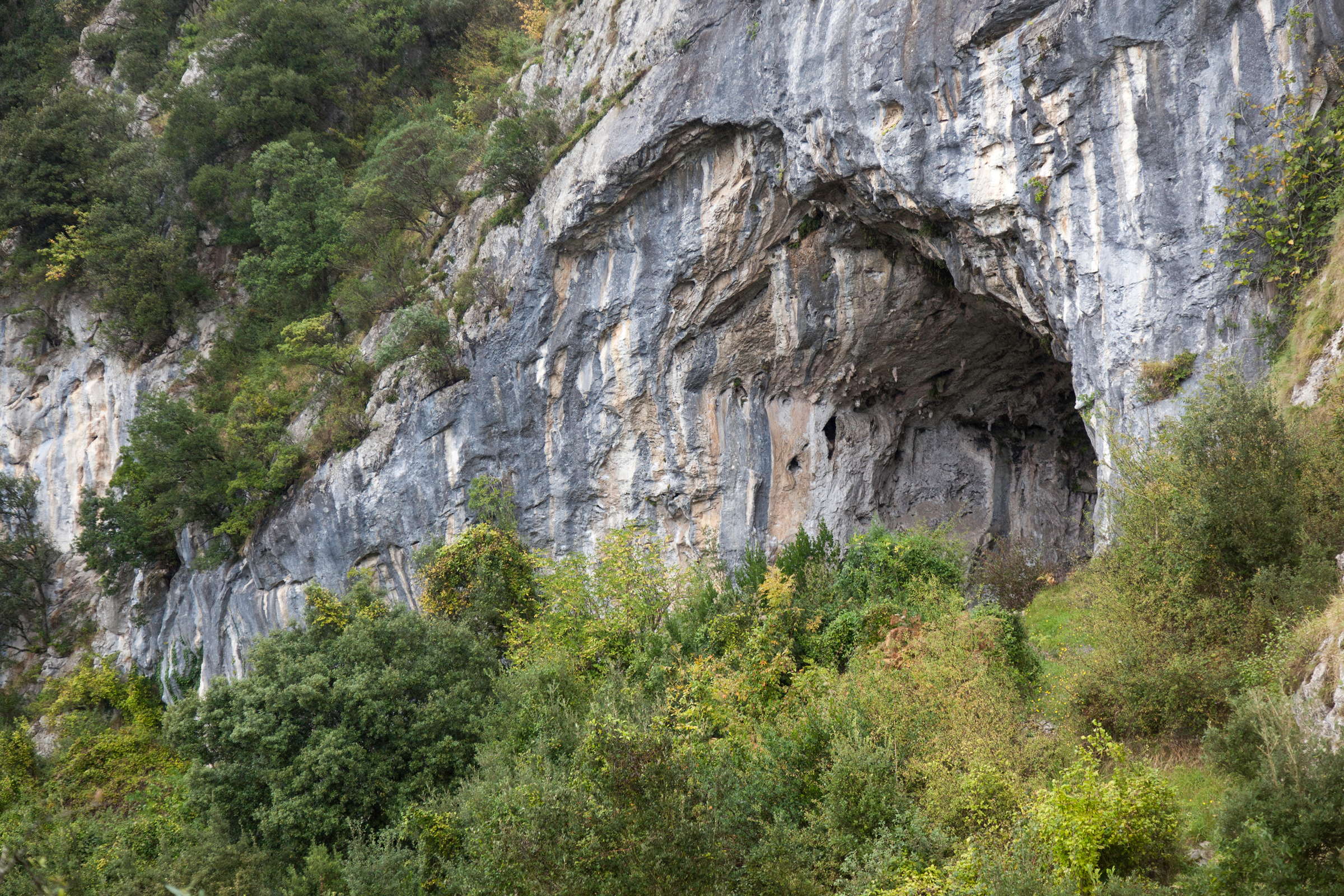How Our Stone Age Ancestors Lived & Hid
 |
| Cueva de El Mirón in the Rio Asón valley of eastern Cantabria, Spain. The cave opening is about 260 metres above sea level. |
No, I'm not obsessing about our human ancestors. Reading the scientific press I've notice that stories seem to run in cycles, and for the last few days most of the research reports that a writer might find interesting have been about our most ancient ancestors.
To see or to be seen?
This is the question that humans inhabiting the Cantabrian coast of Spain during the Palaeolithic era had to ask themselves.
 |
| Suggested Reading Click on image |
The oldest sites tend to be located on conical mountains, such as El Castillo in Cantabria and Santimamiñe in Biscay. They stand out in the scenery; in other words, not only do they offer a good vantage point, but they are also highly visible themselves.
Over the course of the Palaeolithic new sites spring up, many of them in previously uninhabited caves and places of lower altitude. "From these caves they could not see as far, but the view would have covered a wider horizon," the scientist expands.
In total, the researchers studied 25 archaeological sites from the end of the Upper Palaeolithic - the periods known as the Magdalenian and the Azilian - and used a geographic information system (GIS) which combines space data, such as maps and digital models of the land, with alphanumeric information.
Cultural, social and ideological changes
Over this historical period, the climate changed and significant social transformations occurred. It was the end of the last glacial period, and new tools appeared, such as harpoons. There were also social, cultural and ideological changes, such as the disappearance of cave art.
The interpretation given by the authors of the recent article is that the preferences when deciding on a habitat could be based on two parallel reasons which are not mutually exclusive.
First, hunting large herds of animals - mainly doe - became less widespread.. "Human beings were beginning to adopt a more varied diet, therefore it was not as important to guard their territory and keep watch for packs of animals; rather, they needed more direct access to a variety of resources nearby," highlights García-Moreno.
The other explanation is a social one: it appears that at the end of the Palaeolithic period, human communities broke up and began to travel shorter and shorter distances in their nomadic movements; old contacts at great distances weakened.
"These issues of social organisation are difficult to tackle, as they do not tend to leave obvious material evidence behind. It is possible that the large sites that were very visible in obvious areas of the landscape began to lose their function as symbolic locations where different groups would meet, and because of this they chose other, smaller areas, of the kind we might call logistic, more practical," the scientist concludes.
* * * * *
Story Source: Alejandro Garcia-Moreno. To see or to be seen… is that the question? An evaluation of palaeolithic sites’ visual presence and their role in social organization. Journal of Anthropological Archaeology, 2013

Comments
Post a Comment